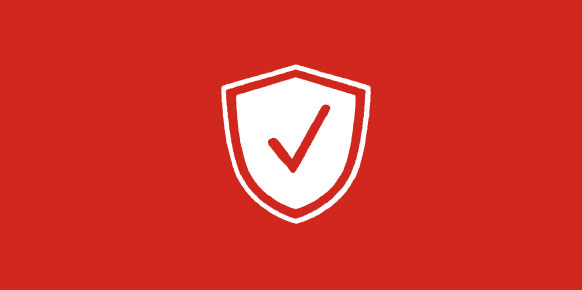By Reetu Bajaj- HR Advisor at ADP Canada
There’s no denying 2020 has been a year full of uncertainty, fear and frustration. However, it’s also been a year of growth, awareness and understand ing. Conversations around the importance of diversity, equity and inclusion (DEI) are alive and well across the country. From protests and discussion around systemic racism to calls for action to improve hiring practices and pay equity and equality, this year has shown that people are ready and willing to collectively call for change.
However, enacting change and implementing these principles in the workplace is not a quick and straightforward task.
So, where can HR professionals and organizations start, if they want to play a key role in facilitating a more diverse, equitable and inclusive culture? The journey begins with recruitment and can be carried throughout all career milestones and processes that follow - from onboarding to leadership initiatives, true DEI is a top-down strategy – not an HR program.
What Canadian Workplaces Can Do Now
Review your recruitment process
Early wins to improving diversity, equity and inclusion start at the very beginning of the employees’ journey, when they are recruited.
The way an organization recruits says a lot about their values. It’s important to remember that a job description is the first impression each cand idate has of an organization. Are all job descriptions inclusive? Are recruiters being asked to provide a diverse variety of cand idates? Are the definition of skills and required experience inclusive of all backgrounds? Are accommodations being offered? Asking these questions can go a long way when working towards building a more diverse hiring process and culture.
Include DEI in onboarding and training:
Once the candidate has moved beyond the hiring process, they’ll be looking to understand their new organization’s culture. This is why emphasizing your company’s DEI values in the onboarding and training process is crucial to each employee’s introduction to and growth within the organization.
Employees should be trained on diversity, equity and inclusion policies as soon as they join the organization. This training should provide guidelines that clearly communicate what is and is not acceptable as well as the resources available. HR teams and managers should also educate all new employees on how and where to access policies so they can review them after training or whenever needed.
Communicate and adjust policies regularly and provide resources
While the onboarding process plays an integral role in each employee’s understand ing of DEI policies, the education does not stop there.
Organizations should continue to hold regular meetings, so employees are aware of diversity and inclusion policies and what constitutes misconduct. The more transparent the conversations, the more likely an employee will come forward if they experience an issue. These regular conversations also set expectations and keep policies fresh in all employees minds, which can help to prevent future issues.
In addition to regular meetings, many organizations also opt to administrate regular surveys, internally and anonymously, to collect feedback exempt from bias. Results from our latest Workplace Insights survey show that nearly a third (31%) of surveyed working Canadians who belong to a visible ethnic minority report they have experienced or witnessed judgment or misconduct in their current workplace, based on ethnicity or skin colour. Visible minorities also reported feeling a negative impact on their career and a greater feeling of discomfort while expressing their opinions at work. These anonymous surveys provide an opportunity for employees to feel comfortable voicing their concerns and opinions on policies and will allow your organization to monitor progress and track any changes in sentiment over time.
Lastly, it’s important to provide as many resources as possible. This could include HR team members, managers, employee networking groups or resource groups who focus on the value of diversity and cultural awareness. Some organizations also choose to designate a specific diversity and inclusion point of contact who employees can speak with regarding any incidents in the workplace.
Walk the talk: The importance of inclusive leadership
Diversity, equity and inclusion is an all-encompassing business strategy – not just an HR program.
This is why it’s so important to have a diversity, equity and inclusion vision for your organization that prompts senior leadership buy-in. This includes treating diversity and inclusion like other strategic goals, using data to inform efforts and showing an ongoing company commitment to continue to learn and adapt.
This inclusive commitment and vision needs to be demonstrated by the leadership team, inside and outside of the office. Our recent survey found that 47 per cent of young workers believe they would feel more loyal to their company if it publicly took a stand on DEI, a sign that expectations around diversity and inclusion may be heavily-weighted attributes of ideal employers as the future of work emerges.
The Inclusive Road Ahead
There is no one-size-fits-all approach to creating, or even, sustaining a diverse, equitable and inclusive organization. It requires constant education, employee feedback, legal compliance, and policy adjustments, meaning organizations must be willing to learn and adapt.
A brighter, more inclusive world of work is quickly emerging and employers must keep this in mind if they want to remain resilient, dynamic, and successful. Now more than ever, it’s crucial that organizations incorporate DEI into their top strategies and daily business routines because it’s this philosophy that will define their employment brand for the next several years.
Learn more
To learn more about how organizations can set themselves up for success when it comes to diversity, equity and inclusion, you can listen in to hear a more in-depth conversation between DEI expert Cathy Gallagher-Louisy, Principal, CGL Consulting and ADP Canada at: https://adpcanada.podbean.com/
To read more about our diversity and inclusion efforts, check out the ADP Corporate Social Responsibility report available from this page.



